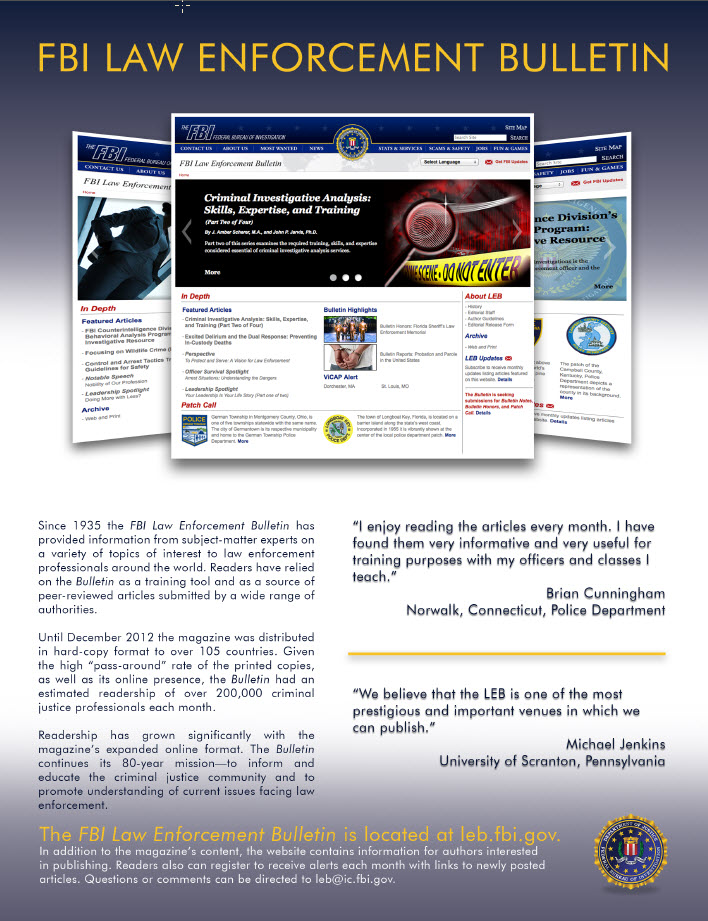 Humintell is proud to be frequent contributors to the nation’s premier law enforcement publication, the FBI Law Enforcement Bulletin.
Humintell is proud to be frequent contributors to the nation’s premier law enforcement publication, the FBI Law Enforcement Bulletin.
Since 1935, The FBI has provided information on current law enforcement issues and research in the field to the larger policing community through this publication. Today, the FBI Law Enforcement Bulletin remains one of the most widely read law enforcement-related publications in the world. It is distributed to law enforcement administrators in more than 105 countries and has an estimated readership of over 200,000 criminal justice professionals each month.
To view past articles featuring Humintell, please click the appropriate links below.
Evaluating Truthfulness and Detecting Deception
The Role of Violence in Predicting Violence
Reading People: Behavioral Anomalies and Investigative Interviewing
*NEW* Exploiting Verbal Markers of Deception Across Ethnic Lines: An Investigative Tool for Cross-Cultural Interviewing
 Written by Anett Grant for Fast Company
Written by Anett Grant for Fast Company